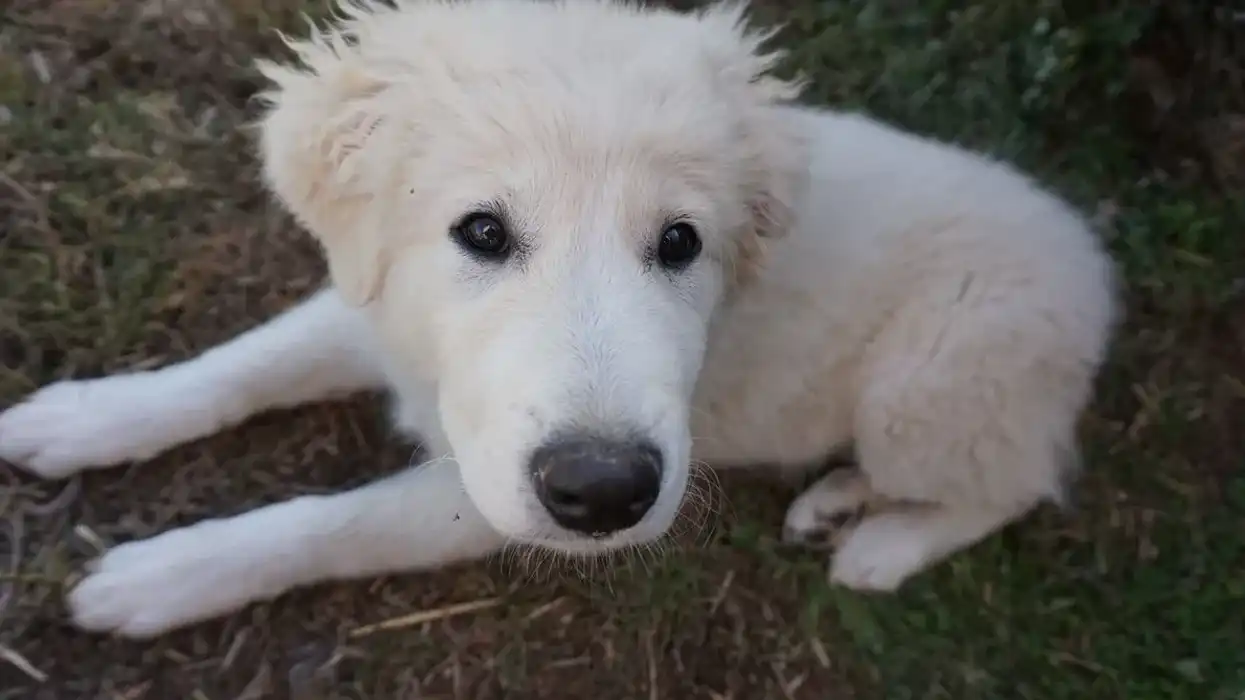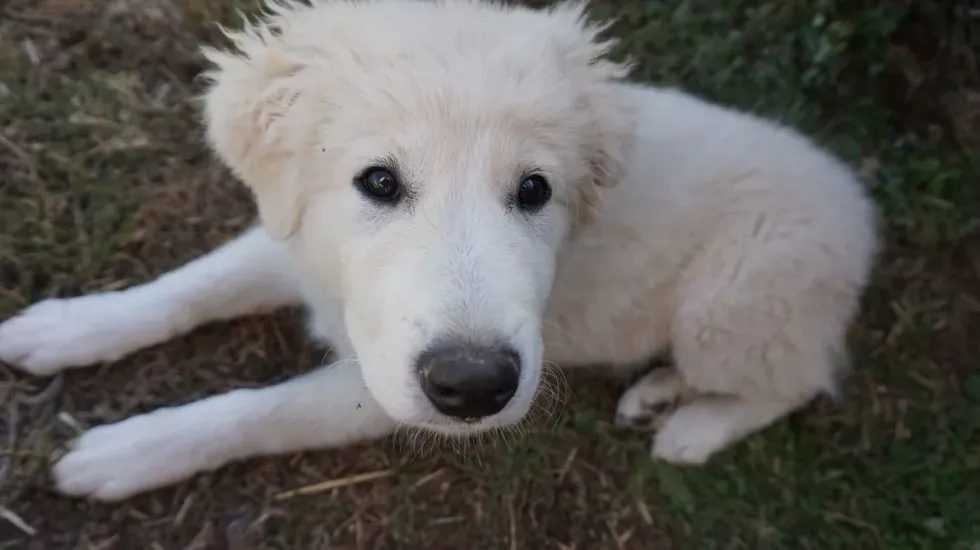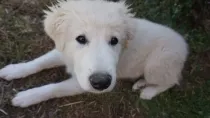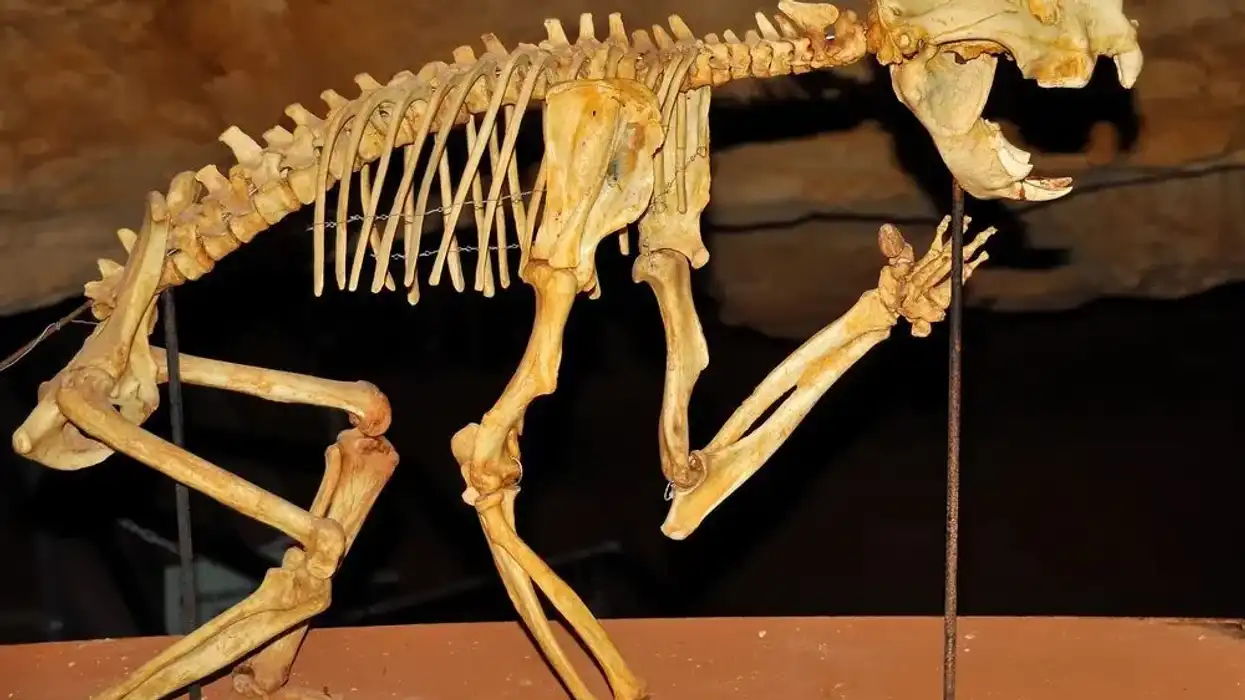Fun Great Pyrenees Facts For Kids
Content
- What type of animal is a Great Pyrenees?
- What class of animal does a Great Pyrenees belong to?
- How many Great Pyrenees are there in the world?
- Where does the Great Pyrenees live?
- What is a Great Pyrenees' habitat?
- Who do the Great Pyrenees live with?
- How long does a Great Pyrenees live?
- How do they reproduce?
- What is their conservation status?
- What do the Great Pyrenees look like?
- How cute are they?
- How do they communicate?
- How big is the Great Pyrenees?
- How fast can a Great Pyrenees run?
- How much does a Great Pyrenees weigh?
- What are the male and female names of the species?
- What would you call a baby Great Pyrenees?
- What do they eat?
- Are they slobbery?
- Would they make a good pet?
- Did you know...
- Characteristics and health issues
- Getting Your Own Great Pyrenees
- The History Of The Great Pyrenees
Have you heard of the Great Pyrenees dog breed which was once officially declared as the royal dog of France? This breed originally came from the Pyrenees Mountains that span over Spain and France. They were mainly bred to work as guard dogs, but the breed soon became known for their affectionate nature too.
These dogs usually have a solid white double coat, but dogs with reddish-brown or gray markings are also accepted by the American Kennel Club. The great Pyrenees are also lovingly known as Pyrs.
They are medium to large-sized dogs and have a muscular body. Their dense undercoat makes them weatherproof which helps them to stand harsh winter winds.
They are high-energy dogs, so a pet Pyr will love to go on regular adventure trips as well as engage in daily exercise. Its majestic and royal look has made it one of the most popular dog breeds around the world.
Do you want to learn more interesting Great Pyrenees facts? Keep reading to find out more, and you can also check out our articles on the toy poodle and the Eskimo dog to know more about other dog breeds.
Great Pyrenees Interesting Facts
What type of animal is a Great Pyrenees?
The Great Pyrenees is a large dog breed that was originally bred to be livestock guard dogs.
What class of animal does a Great Pyrenees belong to?
Great Pyrenees dogs fall in the class Mammalia and the family Canidae.
How many Great Pyrenees are there in the world?
As they are a popular dog breed in homes around the world, it is difficult to estimate their exact population in the world.
Where does the Great Pyrenees live?
The Great Pyrenees lives in human households. In the past, they were found on farmlands as guard dogs. The dog breed was first found in the Pyrenees Mountains spanning between France and Spain and this Pyrenean mountain dog came to America in 1931. The dog breed is found all over the world.
What is a Great Pyrenees' habitat?
Great Pyrenees dogs have a double coat, so they can adapt well to cold climates. However, they aren't well suited to warm temperatures.
Also, these dogs aren't well adapted to living in an apartment or as solely indoor dogs as they are intolerant to living in smaller spaces.
They love to have a big space to roam around throughout the day, so these dogs appreciate homes with a backyard or a garden. They also have a high energy level, so you can take your Great Pyrenees on frequent hiking trips.
Who do the Great Pyrenees live with?
Great Pyrenees dogs are quite affectionate with their human family. They also get on well with kids and other pets.
These dogs can be a little adamant when it comes to training, so you need to be patient while handling them. Start training them as puppies, to hopefully raise a dog that can handle socialization well.
Great Pyrenees dogs may at times behave a little weary of strangers, but handling them isn't tough as they are not an aggressive breed. Owners should keep these dogs away from small mammals or rodents as they do have a high prey drive.
How long does a Great Pyrenees live?
The average life span of the Great Pyrenees breed is about 10-12 years. Pet parents should remember that the life span of a dog depends on several different factors, such as their overall health and even their genes.
How do they reproduce?
Like any other dog, a Great Pyrenees female go through estrus (heat) cycles twice a year. Mating during these cycles leads to conception and the gestation period can last anywhere between 58-68 days.
As a fairly large dog breed, a Great Pyrenees female can have between seven and 10 puppies in a litter, so be ready to handle several bundles of cuteness at the same time! Each puppy is dependent on its mother for the first two weeks, after which they begin to wiggle their way around.
What is their conservation status?
The Great Pyrenees is yet to be enlisted in any conservation lists.
Great Pyrenees Fun Facts
What do the Great Pyrenees look like?
Whenever we are talking about any breed of domesticated dog, one of the first things that people notice is its appearance. Great Pyrenees dogs look majestic because of their beautiful coat and their large burly body.
These dogs have a body structure that has helped them to survive in the mountains and to tolerate cold weather. We have to start describing them by mentioning their astonishing double fur coat that covers their body.
It is usually solid white, but the American Kennel Club also recognizes Great Pyrenees dogs that have a coat that is primarily white with markings too. These splotches can be gray, reddish-brown, badger, or tan.
The thick coats of these dogs are flat and coarse and their undercoat is denser to protect them from the harsh cold winds of the mountains. The coat is longer in the dog's chest and underbelly regions.
Moreover, male dogs have a more pronounced mane that gives them a lion-like look. The hair is sparse on their facial region, but they do have a fairly hairy tail that droops down.
The muscular body of these dogs makes them agile and strong. They have a broad chest with a neck of medium length, and their tail successfully reaches the hock.
The Great Pyrenees breed is said to have a contemplative and elegant expression on its face and they have beautiful rich dark brown eyes along with low flowing V-shaped small ears. The breed has laid-back shoulders and muscular hindlegs and forelegs that can sustain the Great Pyrenees' size.

How cute are they?
The Great Pyrenees breed manages to look royal and cute at the same time. Louis XIV, the longest-reigning French monarch, even gave the Great Pyrenees breed the honor of being the Royal Dog of France!
The affectionate approach of these dogs makes them even more adorable and Great Pyrenees puppies tend to be extra fluffy and cute because of their soft fur coat.
How do they communicate?
Understanding the communication of your pet is a key way to deal with any behavioral problems that might occur. One of the characteristics of the Great Pyrenees dog breed owners should know is their affinity to bark.
These dogs have been bred as herd dogs in the past, and one of their main ways of communication has been through vocalization. Hence, your Great Pyrenees dog will often want to communicate by barking.
Other than that, you will also notice the facial and bodily expressions of your dog, which the breed uses to communicate its emotions.
Owners can even train a Great Pyrenees dog to learn communication cues. This can be easily done through lots of positive reinforcement and training, though it can take a while.
Like other dogs, the Great Pyrenees also communicate with each other through the scent of their urine. They use this to mark their territory as well as when looking for a potential mate.
How big is the Great Pyrenees?
The average height of a Great Pyrenees dog is around 25-32 in (65-80 cm) making them a medium-large breed of dog. They are similar in height to the Pyrenees Mastiff which grows to an average height of 28-30 in (72-77 cm).
People often confuse the two breeds but the Mastiff often has a coat with masking of a different color.
How fast can a Great Pyrenees run?
The running speed of the Great Pyrenees is thought to be around 25 mph (40.2 kph). However, this dog breed isn't great at running long distances.
How much does a Great Pyrenees weigh?
The average weight of the Great Pyrenees dog breed is around 85-160 lb (39-73 kg). One of the crucial health concerns for this dog breed is its potential to gain too much weight. Hence, it is important to keep a check on their diet to keep them in good health.
What are the male and female names of the species?
A male Great Pyrenees is known as a 'dog' and a female Great Pyrenees is known as a 'bitch'.
What would you call a baby Great Pyrenees?
A baby Great Pyrenees is called a Great Pyrenees puppy.
What do they eat?
It is estimated that an adult Great Pyrenees dog eats about four to six cups of food daily.
This quantity can be divided into two or three meals according to the liking of the dog.
It is important to feed this dog with high-quality, protein-rich food, which helps to sustain its large body and high energy level. Dog parents can feed them with a mix of wet and dry food, but it is important to consult with a vet about the diet of your dog.
The exact quantity of food that you will give your dog depends on the age, size, and health conditions of the dog, and of course, a puppy will require less food than a full-grown adult dog.
Are they slobbery?
No, the Great Pyrenean Mountain dog isn't very slobbery.
Would they make a good pet?
Absolutely! The Great Pyrenees temperament is very well-mannered and this makes them one of the best pet dog breeds that you can have. They can grow to a large size though and are quite heavy, but these dogs are always a child at heart.
They are extremely friendly with their owners as well as with children. Along with that, these dogs can also be quite nurturing in nature. They are loud and frequent barkers, but their sweet and loveable nature makes them a pet of choice for many.
Did you know...
A Great Pyrenees dog named Duke the Dog successfully became the Mayor of Cormorant, a small town in Minnesota, the United States in 2014!
The Great Pyrenee's dog breed is nocturnal, so they may end up barking at night.
Some researchers believe that the Great Pyrenees' breed might have originated in Central Asia or Siberia.
Characteristics and health issues
When you are getting a pet dog, it is important to know all about the key characteristics that you can expect from them. The Great Pyrenees is a well-mannered dog breed that is affectionate and devoted to its humans.
They cannot spend long periods alone, so you will need to spend a lot of time with them, and the dog is also known for its high energy level, so they will need at least an hour's worth of exercise daily. Outdoor exercise sessions work great for them.
They have a double coat, so these dogs may feel a little uncomfortable in hot summers. Hence, it is important to always make sure they have water by their side.
One of the owner's biggest pet peeves about the Great Pyrenees breed is their frequency of shedding. They are medium to heavy shedders, so their coat needs frequent brushing. If you don't have the time to brush their coat daily, try to give them a bi-weekly brushing.
Another thing to know about them is their stubbornness regarding training. You will need to spend a lot of time making sure that your dog is comfortable when training to build trust and break their often stubborn behavior.
Dog parents should also be aware that the Great Pyrenees is one of those breeds that are frequently prone to health conditions. These may include obesity, hip dysplasia, gastric torsion, bone problems, patellar luxation, Addison's disease, cataracts, and entropion.
Before you adopt a dog, make sure to talk with an experienced vet who can inform you more about the particular breed. It is also necessary to buy your dog from a responsible breeder who will give you all of the important health information about the parents of the dog.
Getting Your Own Great Pyrenees
Are you ready to adopt a Great Pyrenees puppy? If yes, then it might cost you anywhere from $ 1400-5000.
You can sometimes find these dogs in rescue centers too, which will cost you much less. Make sure to get your puppy from a responsible breeder to have the best chance of a happy and healthy dog.
Another thing to check when buying a Great Pyrenees is the dog's coat color, as it should be compliant with the American Kennel Club's guidelines.
This will help prevent you from overspending on a Great Pyrenees mix when you believe you are getting a pure-bred dog. They are indeed great family dogs, and their affectionate nature makes them adorable pets.
The History Of The Great Pyrenees
The earliest Great Pyrenees history takes us back to the Pyrenees Mountains of France and Spain, where they were bred to work as guard dogs. They have a double coat which suggests they're well adapted to mountain habitats.
Here at Kidadl, we have carefully created lots of interesting family-friendly animal facts for everyone to discover! Learn more about some other mammals including the Goldendoodle, or the Petit Basset Griffon Vendéen.
You can even occupy yourself at home by drawing one on our Great Pyrenees coloring pages.
We Want Your Photos!
More for You
See All
Bachelor of Arts specializing in Journalism and Mass Communication, Postgraduate Diploma in Sports Management

Moumita DuttaBachelor of Arts specializing in Journalism and Mass Communication, Postgraduate Diploma in Sports Management
A content writer and editor with a passion for sports, Moumita has honed her skills in producing compelling match reports and stories about sporting heroes. She holds a degree in Journalism and Mass Communication from the Indian Institute of Social Welfare and Business Management, Calcutta University, alongside a postgraduate diploma in Sports Management.
Disclaimer
1) Kidadl is independent and to make our service free to you the reader we are supported by advertising. We hope you love our recommendations for products and services! What we suggest is selected independently by the Kidadl team. If you purchase using the Buy Now button we may earn a small commission. This does not influence our choices. Prices are correct and items are available at the time the article was published but we cannot guarantee that on the time of reading. Please note that Kidadl is a participant in the Amazon Services LLC Associates Program, an affiliate advertising program designed to provide a means for sites to earn advertising fees by advertising and linking to Amazon. We also link to other websites, but are not responsible for their content.
2) At Kidadl, we strive to recommend the very best activities and events. We will always aim to give you accurate information at the date of publication - however, information does change, so it’s important you do your own research, double-check and make the decision that is right for your family. We recognise that not all activities and ideas are appropriate for all children and families or in all circumstances. Our recommended activities are based on age but these are a guide. We recommend that these ideas are used as inspiration, that ideas are undertaken with appropriate adult supervision, and that each adult uses their own discretion and knowledge of their children to consider the safety and suitability. Kidadl cannot accept liability for the execution of these ideas, and parental supervision is advised at all times, as safety is paramount. Anyone using the information provided by Kidadl does so at their own risk and we can not accept liability if things go wrong.
3) Because we are an educational resource, we have quotes and facts about a range of historical and modern figures. We do not endorse the actions of or rhetoric of all the people included in these collections, but we think they are important for growing minds to learn about under the guidance of parents or guardians.







